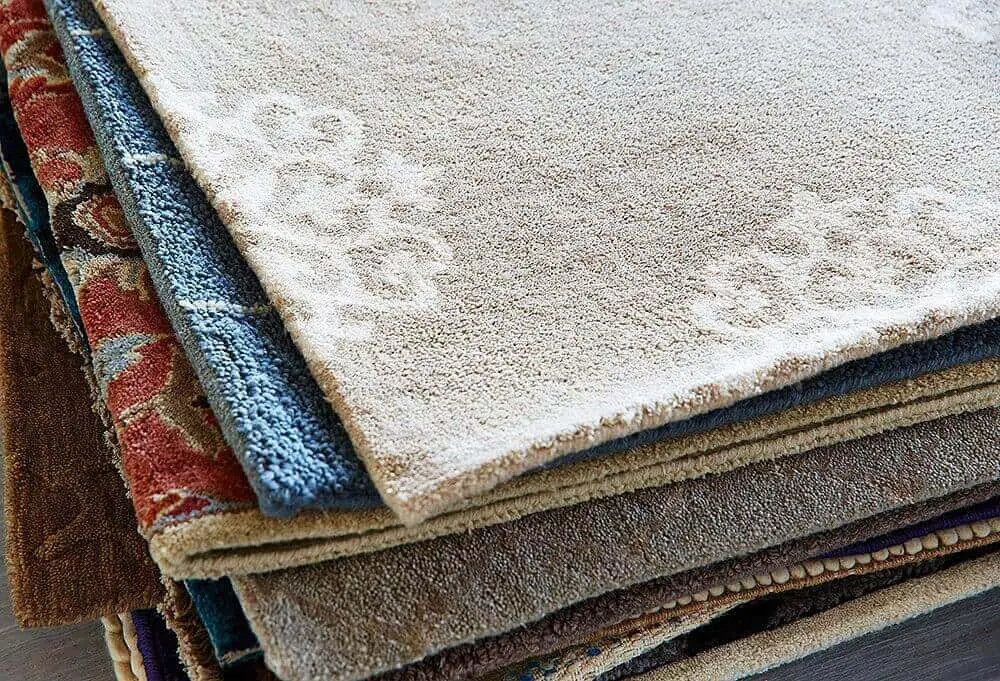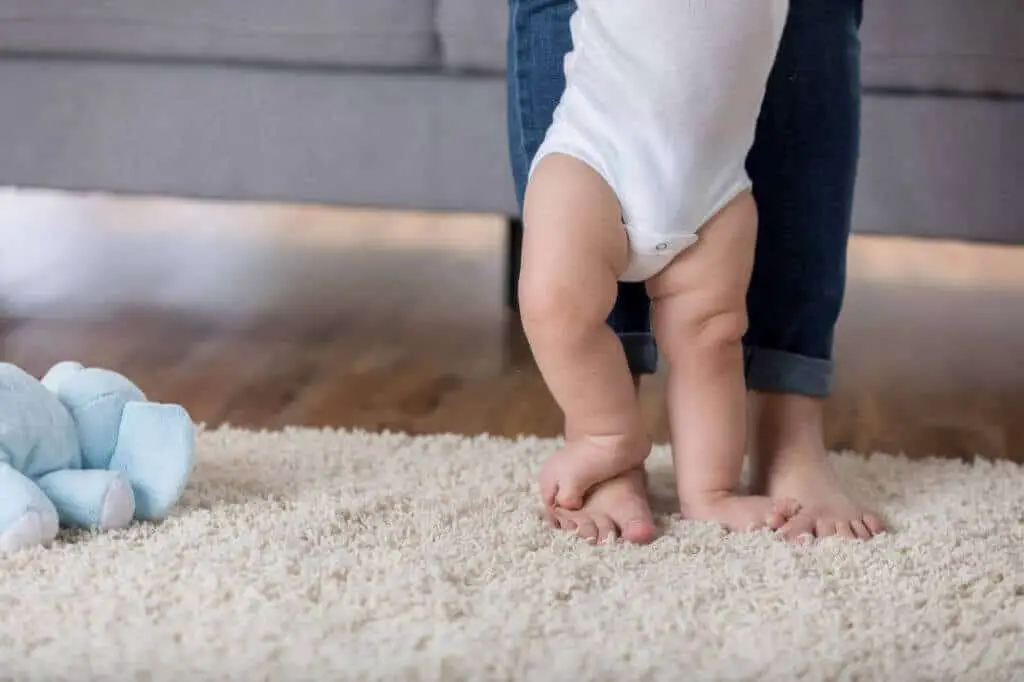When it comes to choosing the perfect carpet for your space, the decision can be quite confusing as they are tons of different options to choose from.
One of those determining factors is the rug pile height, which is basically the distance from the top surface of the loops to the backing of the rug.
There are three different pile lengths; low pile carpet, mid rug pile, and high pile carpet. In this article, we are going to be discussing on Low and High Pile carpet, and the perfect choice to go for.
Low Or High Pile Carpet, Which Should You Go For?
Table of Contents
Before we go into details about low and high pile carpet, let’s define pile. Well, for starters, pile basically refers to the loops of material that forms the carpet itself.
These loops of material are fibers that are attached to the backing of the carpet, which can be latex or made with natural materials/composition, and this defines the pile of the carpet itself.
These fibers vary from one carpet to the other; it is the foundation on which the differentiation between low and high carpet is found. These fibers can be soft and coarse; they can be sewn loosely or tightly against each other.
Low pile carpets have short and tight fibers and are also known as Berber or Saxony, while high pile carpets are taller and looser, and they are also known as shag or frieze.
The difference between the different types of carpet is very visible, and you can tell one from the other by inspecting the length of the loops and the tightness of their composition.
High and low pile carpet both have their pros and cons; there is no actual “best” out of the two options; you just have to find the one that works best for you. Now let’s get into details about both low and high pile carpet.
Low Pile Carpet
This is best suited for homes with a large number of inhabitants, and due to its short fibers, it has a reduced amount of shedding. So it is ideal for people prone to allergic reactions to common household allergens or people suffering from asthma.
Low pile carpet has short and flat fibers, which gives the carpet a smoother surface, which makes it easier to maintain. The short length of the fibers gives little room for dirt and debris to hide, so vacuuming is more effective.
Low pile carpet also has a tight weave, which prevents the penetration of the stain. Another advantage of low pile carpet is their long lifespan, and you don’t have to worry about your furniture leaving much of a dent on the carpet’s surface.
You spend a lot lesser to purchase a low pile carpet compared to its high counterparts. However, low pile carpet does not offer the same plushy and comfortable feeling you get when walking over a high pile carpet.
They have reduced aesthetics, and they’re also more likely to flatten over time, and they provide significantly less foot support and insulation.
High Pile Carpet
This high pile carpet features long fibers which help to guarantee its long term performance; they give the carpet a plush appearance and texture.
High pile carpet is best placed in low traffic areas, and when placed in a room, this type of carpets instantly enhances the aesthetic of the room.
Just walking barefooted across this carpet sends you on a split second of mental bliss as they are so soft and cozy. High pile carpet has a very beautiful appearance, and that’s the major reason many people go for it.
With this carpet, you can ditch your furniture and just lounge on your carpet, and you will be very comfortable. For a carpet to be considered a high pile, the fibers have to be around 1/2 inch to 3/4 inch in length.
This type of carpet has a loose appearance, and they add warmth, softness, and coziness to your space. They are usually placed at the center if a room with all the other furnishings chosen to complement or enhance the carpet instead of the other way around.
High pile carpet adds more of a cushioning effect to your floors, which can be very useful if you have kids. The longer fibers also help to dampen sound, and they offer a softer landing if your little one falls.
This Carpet can get your normal room looking like it was designed by some high-end decorator.
However, this beauty comes at a cost; due to their long fibers, any furniture placed on the carpet leaves a dent, which can cause permanent distortion of those areas. This is why rug and carpet pads are most times necessary.
The long fibers also make this carpet harder to vacuum; dust and debris can easily be embedded deeply into this carpet, and they tend to absorb stains and spills way more compared to low pile carpet.
If you are prone to allergies or suffer from asthma, this carpet can be detrimental to your health as it traps dust and allergens. This type of carpet requires higher maintenance, and they are very expensive to buy and install.
High pile carpet cannot withstand high traffic, and it serves more as decor than it does as a flooring.
Types of Carpet Pile
Every type of carpet comes in either one of the two types of the pile; this is cut and loop. Although they are finished in different ways, they both make use of yarn.
Cut Pile Styles
There are different classification of Cut pile styles, which include Velvet, Plush, Saxony, Hard Twist / Frieze, Shag, Twist, Heather Twist. These refer to the twist level of the pile yarn and description of the pile length.
Velvet
Velvet has a short pile length. It has loop lines that can be either uniform in height or a sequence of alternating low and high loop rows. Velvet yarn has a very little twist and is sometimes not heat set.
It has pile tufts that are burst similar to velour, but velvet usually has a slightly longer pile length.
Saxony
This is also another popular cut-pile style; a Saxony has a relatively high pile, and the end of the tuft flairs slightly to produce a luxuriously smooth surface.
Velvet or Plush cut pile constructions are quite similar to the Saxony but have a lower pile height and tighter tuft definition.
Plush
Plush is also a level-cut pile. The type of yarn design usually has a little more twist than a velvet pile carpet, and they are set to retain this twist (water, steam, dye, or chemical setting are used to set wool yarns).
Hard Twist
The hard twist style is also known as Frieze or curled pile. It is basically A cut pile style with a textured finish made up of highly twisted tufts that curl slightly at the pile surface.
The yarn is tightly twisted, then heat set to give the pile surface a textured look; the pile appears to lay randomly.
Shag
The pile tufts are usually very long, and this enables it to create a low-density construction because the spacing of the tufts is more open than other carpet constructions.
Cut & Loop
These type of carpets combines fibers that have been cut with ones that have been looped. This gives it a great scope for creating surface textures and patterns, both in solid and multiple colors.
The multi-level finish is great at hiding footprints and stains, making it a good option for high traffic areas.
Loop Pile Styles
Loop pile styles include Level Loop, Sisal or Cord, Multilevel Loop, Textured Loop.
Multi-Level Loop
A multi-level loop pile is like a level loop pile except that the loop heights vary (usually two to three different loop heights), creating an informal, random textured appearance.
This type of carpet does not hold unto marks and stains and, therefore, a great option for high traffic areas and family rooms – but the loops can, however, be vulnerable to pulling from pets claws.
Level Loop
A level loop pile is created by weaving even loops of yarn into both ends of the carpet backing. This is a very durable type of carpet, and it is also track resistant as well as having a natural, casual appearance even when made from synthetic fibers.
Although Higher loops create a more luxurious appearance, Level loop piles with short and densely packed loops are easier to clean, and they offer a good blend between luxury and practicality.
This type of carpet is a great option for high traffic areas. The loops can also be vulnerable to pulling from pet’s claws.
Sisal/Cord
Sisal carpet, also known as cord carpet, generally refers to a heavily textured loop pile carpet. A sisal/cord carpet usually looks like traditional mat floor coverings made from plant fibers, but in carpet, it is a much more stylish and comfortable alternative.
The loop lines can be either be a sequence of alternating low and high lines or uniform height.
Related: How to get wrinkles out of carpet without a carpet stretcher
Conclusion
While the difference between low pile carpet and high pile carpet might be significant, it doesn’t put anyone at a pedestal.
The type of carpet you should go for is the one that best suits your living condition and, above all, budget. Because in the end, they both add a warm and fuzzy look to your home.


